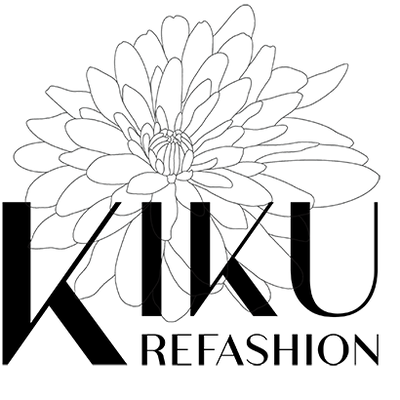January 03, 2023
An ancient process for decorating silk and cotton.
by Susu Smythe January 3, 2023
We started our webstore at www.kikurefashion.com because of our deep admiration of vintage silk Japanese textiles. I am particularly enamored by all forms of shibori, of which there are many. Shibori is an ancient dying process. The word means to wring, squeeze or press. It is a process that may include stitching, binding, pressing, twisting and other forms of manipulation that creates areas that are resistant to a dye thereby creating patterns on the fabric. In the photograph above, each of the white squares with a dot in the center represents a “bead” that has been plucked from the silk and hand tied with a string in a manner to prevent the white silk from absorbing any of the red dye. A garment might include thousands of these “beads” which would have taken weeks and even months to create. Likewise, the red flowers and stems in the example have been manipulated in a different manner as illustrated by the undyed material next to the red finished shibori piece. The silk “remembers” the tying and retains a three dimensional pattern after the ties are removed.
Each color in a shibori garment requires a separate dying. In order to add a color, one area is exposed and all of the other parts must be protected from the dye with a rice paste or by physical separation in some fashion. It is a very complex process, from start to finish.
One shibori garment will have been touched by numerous specialists, starting with the weaving of the silk, to the drawing of the design, to the creation of a stencil pattern which is imprinted on the silk as a guide, to the creation of the shibori pattern through tying, stitching, pressing, etc, to the dyeing and finally by the hand stitching of the seamstress. The bolt of silk is designed and decorated for a single garment in one length before it is cut by the seamstress. The amazing skill of this team can be seen in the rainbow shibori haori (jacket) above where the design is so perfectly matched at the seam it is as if the shibori design had been added after the jacket had been constructed.
Each shibori jacket, kimono or scarf is a work of art that is one of a kind. While shibori continues to be incorporated in new and different ways, the kimono industry is dwindling and the specialized artisans with decades of experience are retiring without similarly trained successors to take their places.
A picture is worth a thousand words. Here are some YouTube videos if you are interested in learning more.
The art of Japanese tie-dying (4 minutes) https://www.youtube.com/watch?v=vYVgv4vK4BI
Kyo-Kanoko Shibori (5 minutes) https://www.youtube.com/watch?v=j6C8FOifOsA
The art of Japanese Shibori (9 minutes) https://www.youtube.com/watch?v=-1jpgI9HN4U&t=75s\
April 17, 2023 1 Comment
March 23, 2023
March 10, 2023
